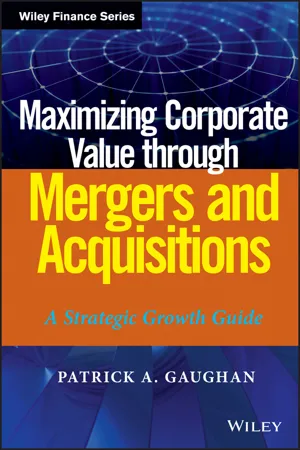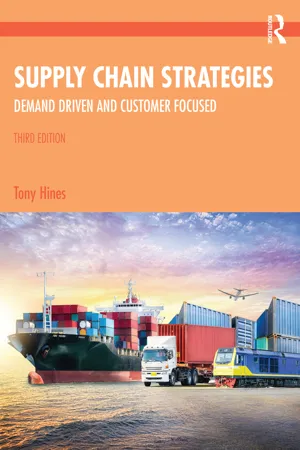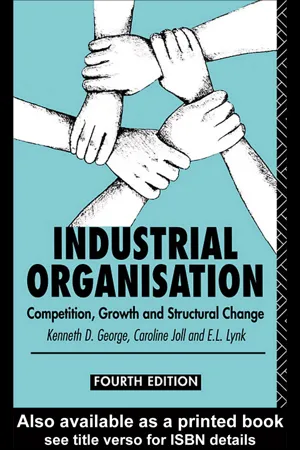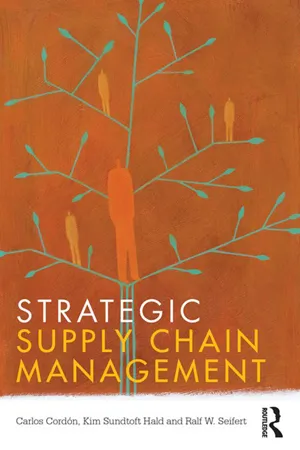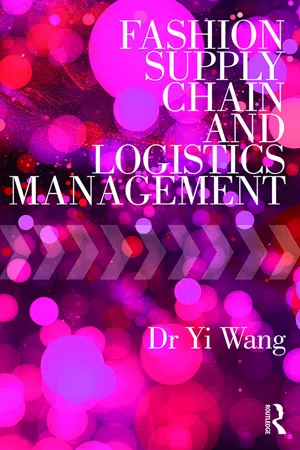Business
Vertical Integration
Vertical integration refers to a business strategy where a company controls multiple stages of the production and distribution process for its products or services. This can involve owning or controlling suppliers, distributors, and retail outlets. By integrating vertically, a company seeks to gain more control over its supply chain, reduce costs, and improve efficiency.
Written by Perlego with AI-assistance
Related key terms
Related key terms
1 of 4
Related key terms
1 of 3
9 Key excerpts on "Vertical Integration"
- eBook - ePub
Maximizing Corporate Value through Mergers and Acquisitions
A Strategic Growth Guide
- Patrick A. Gaughan(Author)
- 2013(Publication Date)
- Wiley(Publisher)
One of the benefits of being vertically integrated is that it can lower some of the risks a company faces in the marketplace. Buying a supplier can allow a company to have greater certainty in access to supplies. It may also allow these supplies to be more dependably available at more predictable prices. When getting access to key supplies is a major risk factor, companies may be able to lower this risk through Vertical Integration. By acquiring a supplier, they may be able to get a dependable source of inputs while possibly being able to gain a competitive advantage by preventing these supplies from being available to the competition. This competitive advantage may carry with it antitrust ramifications, but as markets have become increasingly globalized, most deals, especially vertical ones, tend to move through the antitrust approval process without a great deal of opposition.Vertical Integration AS A PATH TO GLOBAL GROWTH
When a company manufactures a product, it obviously has to get that product to its ultimate consumers. Even if a company has superior products, if competitors have the distribution channels locked up, the company may be at an insurmountable disadvantage. Sometimes, M&A can be the solution to this dilemma.Many industries have different layers or stages with some being more competitive than others. For example, the petroleum industry has multiple stages from exploration and extraction to transportation and refining to the retail stage. Some stages are more profitable than others. We discuss later in this chapter how U.S. companies reacted to the changing profitability in the refining business to become less vertically integrated and to sell off their refining businesses. However, for other industries, being vertically integrated is a way of making sure that your products have a clear path to the consumer and that you will not be adversely affected by the actions of competitors. Companies may want to try to control as many outlets for their products as possible to ensure that they can maintain prices that allow them to extract maximum economic rents for their products. Often, such efforts are thwarted by regulators. One prominent example of how this was done in the United States, but also in the global, market without attracting resistance from antitrust regulators was that of eyeglass manufacturer and marketer Luxottica. We discuss this company's very successful use of a Vertical Integration strategy in the case study that follows. - Colin Barrow(Author)
- 2016(Publication Date)
- For Dummies(Publisher)
Exactly where does your company stand in terms of Vertical Integration in your own industry? The question’s important, because it affects your decision about whether to become more or less vertically integrated over time. Several terms have been coined by business gurus to describe the strategic moves that you may decide to make:- Backward integration: Backward integration means extending your business activities in a direction that gets you closer to the raw materials, resources and expertise that go into creating and producing your company’s products.
- Forward integration: Forward integration means extending your business activities in a direction that gets you closer to the marketplace by involving the company in packaging, marketing, distribution and customer sales.
- Outsourcing: Outsourcing means concentrating on your core business activities by farming out other parts of your company’s operations to outside contractors and vendors that specialise in those particular areas.
- Divesting: Divesting means reducing your company’s activities to focus on specific aspects of your business by spinning off or selling other pieces of the company.
Tables 1-2 and 1-3 describe some of the pros and cons of Vertical Integration.TABLE 1-2 Pros of Vertical IntegrationProReasonEfficiencies If you’re in charge, it’s sometimes easier to co-ordinate activities at the various business stages along the way, combining related functions or getting rid of overlapping areas to streamline your overall operations.Resources If you have a hand in the upstream (early-stage) activities of a business, you can guarantee that your company has access to the raw materials and resources that it needs to stay in business. - eBook - ePub
- J Carlos Jarillo(Author)
- 2013(Publication Date)
- Routledge(Publisher)
Vertical Integration can be used as a learning device. Sometimes it is crucial for a company to understand underlying technologies in some of the components it uses, for changes in those may actually affect the competitiveness of the activities it is involved with. In addition, integrating forward may be a way to understand the rest of its clients better: it makes sense for McDonald's to own a number of its restaurants, so it understands the business better, thus increasing its competitiveness.Vertical Integration to lower coordination costs
Vertical Integration can also ‘save’ the company money when the relation between company and supplier is particularly costly, either because the information that must be passed on to the supplier is substantial or continuous, or may change. In these cases there would be an ‘economy in the transaction’ that could be quite a significant saving. If working with a supplier implies constant changes in specifications, joint learning, contacts at multiple levels, etc., some companies may find that it is more efficient to own the supplier outright.In any case we could generalize by saying that Vertical Integration is justified when leaving the coordination of two activities to the market (i.e. maintaining a policy of concentrating on only a few activities, buying the inputs and selling the outputs to outsiders), either raises the cost of one of the activities, or weakens the company's ability to differentiate it in the eyes of the next customer.All the previous arguments, both right and wrong, have led many companies over the years to integrate. In a way the discussion over Vertical Integration is a bit like the discussion over diversification. Whatever is said about it, one thing is clear: practically all large companies do it.This extension of the practice does not mean, however, that it is free of disadvantages. Again as in the case of diversification, a strong current of opinion has evolved in the last few years against it. In the remainder of this chapter we shall see why - eBook - ePub
Supply Chain Strategies
Demand Driven and Customer Focused
- Tony Hines(Author)
- 2024(Publication Date)
- Routledge(Publisher)
Supply chain integration is difficult even inside a single organization, especially when they are coordinating multiples site activities. However, this problem is magnified when supply chain collaborations involve many different organizations and multiple locations across the globe. Many large organizations are vertically integrated or have a degree of Vertical Integration in their company supply chains. For example, energy businesses such as Shell, BP and Exxon own the supply chain from extraction of fossil fuels through to distribution of refined products, for example, petrochemicals, diesel and petroleum products. It is not always necessary, of course, to have control solely through ownership of the vertically integrated supply chains. There are other ways of working in partnership where you can control but not own the supply chain. Vertical Integration requires large investments of capital, and it is riskier to own the supply chain this way if things go wrong. On the other hand, control this way can also reduce risk when upstream suppliers you own prioritize your supplies over external companies when there is a crisis. Many retail organizations viewed Vertical Integration as attractive to secure supply chains through backward Vertical Integration. For example, furniture stores owning production facilities and even forests. Whisky distillers investing in farms to secure potato crops or brewers of beer and cider owning farms where hops and apples are grown. Examples of forward integration are when companies that manufacture products decide to acquire their own retail outlets.Horizontal integration often occurs when a business decides to take over a competitor’s business and increase market share. For example, in 2022 Asda had agreed to takeover Sainsbury to become the clear market leader before the Competition Markets Authority stepped in to stop the merger because they said it would not be in the best interests of the consumer.The best way to integrate and coordinate supply chain activities is to adopt appropriate supply chain technologies, even if you do not own the supply chain. You can tap into the existing ecosystem of technologies offered by third-party suppliers to leverage value, without being an expert in all the technologies. You just have to evaluate suppliers and their services in the same way that you would evaluate any supplier. - eBook - ePub
Industrial Organization
Competition, Growth and Structural Change
- Kenneth George, Caroline Joll, E L Lynk(Authors)
- 2005(Publication Date)
- Routledge(Publisher)
ceteris paribus its value added/sales ratio tends to be. To avoid this problem we have to rely on more detailed empirical studies.Vertical Integration as a process
Our main concern, however, is with Vertical Integration as a dynamic process. We are therefore interested in the motives that lie behind the integration of activities and ultimately in the way in which integration may affect efficiency and economic welfare.One important motive for Vertical Integration is cost minimisation; another is the desire for greater security, i.e. more control over the market environment. The two are not unrelated. If a firm is better able to control its environment this may result in lower costs. On the other hand, it may also result in market power and monopoly abuse. Another factor which may have an effect is the tax structure. The main purpose of this section however is to unravel the complex interactions that exist between efficiency, security and market power.Cost minimisation
An important determinant of the boundaries between firms and markets is the transactions costs of using the market. These costs include the cost of obtaining information on prices and product specification, and the cost of negotiating and concluding separate contracts. Costs may also be incurred from delay in delivery or from the delivery of inferior intermediate products or from marketing through inferior outlets. Given these costs, ‘a firm will tend to expand until the cost of organising an extra transaction within the firm becomes equal to the cost of carrying out the same transaction by means of an exchange in the open market or the cost of organising in another firm.’ This quotation from Coase’s celebrated 1937 article (Coase 1937:395) draws attention to the fact that the coordination of economic activity may take place either through the market or within the firm and the high transactions costs which are often incurred in using the market are one of the reasons why firms exist. - eBook - ePub
- Carlos Cordón, Kim Sundtoft Hald, Ralf W. Seifert(Authors)
- 2013(Publication Date)
- Routledge(Publisher)
2.1 Effect on profitability of sales increase vs. supply chain improvementBase10% sales increase10% supply chain improvementSales ($) 100 110 100 Supply chain costs ($) 70 77 63 SG&A ($) 20 20 20 Profit ($) 10 13 17Vertically and horizontally integrated supply chains
The level of Vertical Integration is the degree of integration up and down a supply chain. For example, if a retailer starts manufacturing the products it sells, it is increasing its level of Vertical Integration. Vertical Integration may be upstream or downstream. The interesting question is, how many consecutive steps in the supply chain should the company control and own? Two extremes are the Ford Motor Company in the 1920s and Lacoste today. Ford was known in the early 20th century for owning all of the supply chain tasks, from managing the plantations that produced rubber for the tires, to tire making, car assembly and delivery. By contrast, Lacoste is an almost fully outsourced company: manufacturing and distribution are entirely outsourced, while marketing and design are largely outsourced.The level of horizontal integration is the breadth of activities at the same point in the supply chain. A typical method of increasing the level of horizontal integration is to acquire other companies or brands in the same business. For example, supermarkets that are moving toward selling a larger variety of non-food items are increasing their level of horizontal integration. Another example is Volkswagen’s efforts to merge with Porsche: by merging with another brand in the same field, Volkswagen was able to consolidate its activities and thereby achieve economies of scale.Although in the last century we have seen many companies pursue a much lower level of Vertical Integration, this evolution does not mean that companies must strive for vertical disintegration. If anything, today there are extremely successful corporations like Inditex (the owner of the Zara fashion chain) and Luxottica (the world leader in eyewear) that have a high level of Vertical Integration, but there are also thriving companies like Hewlett-Packard that have a very low level of Vertical Integration. Thus, it cannot be said that a high or low level of Vertical Integration on its own is the key to success. The main advantages and drivers of Vertical Integration of supply chain flows are: - eBook - ePub
- Yi Wang(Author)
- 2018(Publication Date)
- Routledge(Publisher)
Specific factors said to have been previously used to integrate supply chain management include the control of transportation and logistics, outsourcing, IT, choice of location, and controlled inventory management. Due to ‘rapid growth in third party logistics providers’ (Johnson & Pyke, 2001, p.8) within the apparel business, there is a wide span of outsourcing logistics relationships that are important in maintaining a successfully integrated supply chain. Outsourcing decisions are vital to a business’s success and the growth of the apparel sector only means there is ‘a large and expanding group of technologies and services to be examined’ (Johnson & Pyke, 2001, p.9). Outsourcing is used in apparel businesses successfully in order to integrate their supply chain and has specific connections within India and China (Johnson, 2006). The use of both outsourcing and IT in particular are examples of alternative solutions to form an integrated supply chain network.4.4 Vertical IntegrationAn enterprise is vertically integrated along a supply chain when it owns assets (Grossman & Hart, 1986), organises activities or controls activities both upstream and downstream (Aoki et al., 1990; Richardson, 1996). Vertical Integration has not been considered to be a superior form of retailer in particularly volatile environments; however, there are some market characteristics found in the apparel industry that could prove to be advantageous to implementing rapid response (Richardson, 1996).A number of companies have employed strategies such as quick response and accurate response to improve their supply chains (Chandra & Kumar, 2000), whilst it is also common for a just-in-time strategy to be implemented. Quick response is a strategy that most accurately describes the alignment of design, retail and manufacturing operations that will present the flexibility to respond to constantly changing markets (Hammond, 1990). Quick response then leads to such benefits as reduced inventory costs, fewer markdowns of overproduced items, and occasionally increased sales of popular items (Richardson, 1996).The current environment emphasises timing and know-how: vertically integrated companies have been able to benefit from innovations and quick response, which are designed to shorten the potentially lengthy production cycle (Richardson, 1996). By using their quick response and utilising technology, these organisations are able to evolve their capabilities in terms of learning, communication and coordination, allowing them to try out designs and products, imitating others and then continuing to produce those that sell. - eBook - ePub
- Gillian Doyle(Author)
- 2013(Publication Date)
- SAGE Publications Ltd(Publisher)
All of the stages in the vertical supply chain for media are interdependent. For example, media content has no value unless it is distributed to an audience and, likewise, distribution infrastructures and outlets or portable devices for consuming media have little or no value without content to disseminate. No single stage is more important than another but all are interrelated. So, the performance of every firm involved in the supply chain will be threatened if a ‘bottleneck’ develops – i.e. if one player manages to monopolize any single stage in the chain. If, for example, one company gains control over all the substitute inputs at an upstream stage, or all of the facilities required for distribution or for interfacing with consumers, then rivals will be put at a considerable disadvantage and consumers are also likely to suffer.The interdependent relation between different phases in the supply chain has important implications for what sort of competitive and corporate strategies media firms will choose to pursue. The desire for more control over the market environment may act as an incentive for firms to diversify into additional upstream or downstream phases. Vertical Integration refers to the extent to which related activities up and down the supply chain are integrated or are carried out jointly by vertically integrated firms whose activities span across two or more stages in the supply process. Media firms may expand their operations vertically either by investing new resources or by acquiring other firms that are already established in succeeding or preceding stages in the supply chain.CHANGING MARKET STRUCTURES AND BOUNDARIES
Economics provides a theoretical framework for analysing markets based on the clearly defined structures of perfect competition, monopolistic competition, oligopoly and monopoly. In practice, many media firms – especially broadcasters – have historically tended to operate in markets where levels of competition have been strongly influenced by technological factors (e.g. spectrum scarcity) or by state regulations (e.g. broadcasting license requirements) or by both. Up until the 1980s and 1990s, these factors have held back competition. In addition, the traditional tendency for media organizations to operate in quite specific geographic markets, and to be closely linked to those markets by their product content and the advertising services they provide within those markets, has curtailed levels of domestic and international competition in some, though not all, mass-media products and services. - George J. Staubus(Author)
- 2021(Publication Date)
- Routledge(Publisher)
Expansion strategy is addressed first. Aside from simple increase in the volume of given activities, firms typically consider “upstream,” or backward integration, or “downstream,” or forward integration, and/or they consider “horizontal” diversification of products sold. The two historically dominant forms of organization have been called “functional” and “multidivisional,” or M-form. The influence of these organization forms on accounting is addressed in the third section of the chapter. One might observe that all of the prominent firms in an economy are large, vertically integrated, and diversified. That makes separating the influences difficult. A good place to start is with a clear understanding of the underlying economic phenomena, especially Vertical Integration.Vertical Integration
An integrated firm performs more than one activity, each of which is related to another or others by an output-input linkage. To integrate vertically means to extend the sequence of activities within a firm, either by adding an activity previously performed by a supplier (making instead of buying a good used in the firm) – backward integration – or by adding an activity previously performed by a customer of the firm – forward integration. A state of integration exists when separable activities, such as mixing dough, baking, slicing and wrapping bread all occur in the same firm.Certain integrations of activities, such as those just mentioned, are common and may, therefore, seem natural. James Thompson called such a set of activities “core technology” (1967, p. 19 ). Others, such as inclusion of wheat growing, flour milling, selling bread at retail, sandwich making, and sandwich retailing in a firm that mixes, bakes, slices and wraps bread, are less common. Lack of a market for the intermediate product, e.g., mixed, unbaked dough, suggests that adjacent activities commonly are integrated. Large firms that are not highly integrated are scarce or nonexistent. Practically speaking, all firms are integrated firms.Now consider any two adjacent activities mentioned in the preceding two paragraphs, such as mixing bread dough and baking bread. It is possible to organize the related activities by administrative direction within one firm, and it is possible to organize them in two firms related by market transactions. Certain pairs of the above activities commonly are organized within one firm; others commonly are organized across markets. Why? According to Coase, “a firm will tend to expand until the costs of organizing an extra transaction within the firm become equal to the costs of carrying out the same transaction by means of an exchange on the open market or the costs of organizing in another firm.” (1937, p. 395) This is a “transaction cost economics” answer to the integration question. Williamson has a broader explanation: “Holding the nature of the good or service to be delivered constant, economizing takes place with reference to the sum of production and transaction costs, whence trade-offs in this respect must be recognized.” (1985, p. 22
Index pages curate the most relevant extracts from our library of academic textbooks. They’ve been created using an in-house natural language model (NLM), each adding context and meaning to key research topics.
Explore more topic indexes
Explore more topic indexes
1 of 6
Explore more topic indexes
1 of 4
